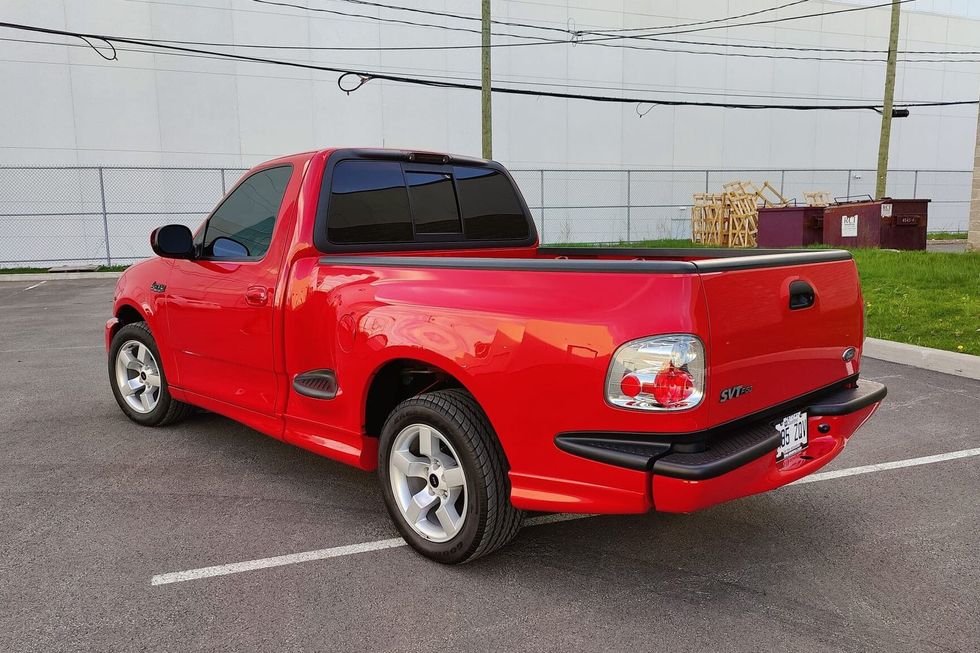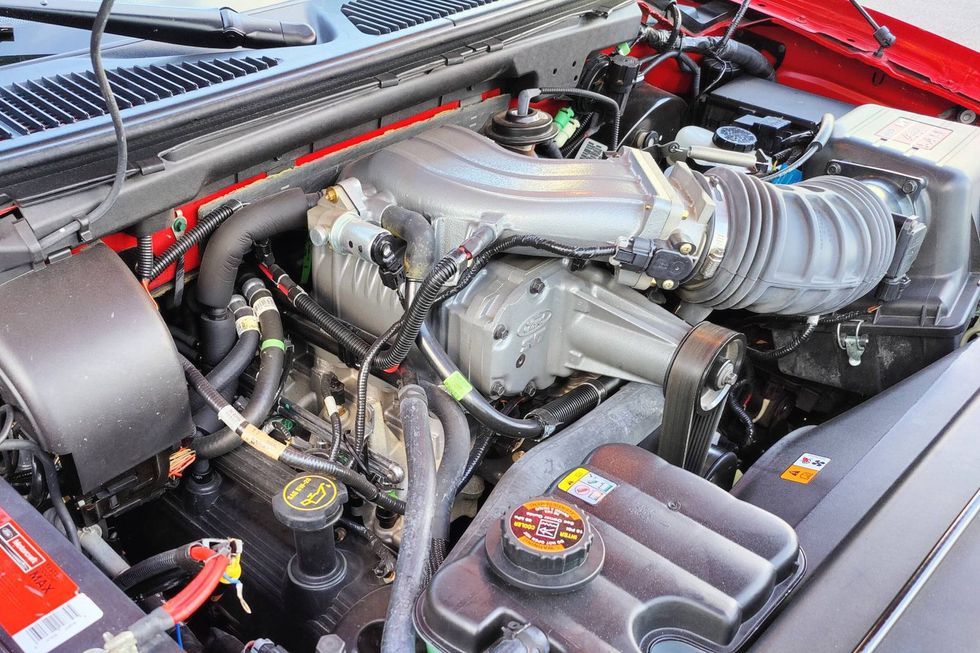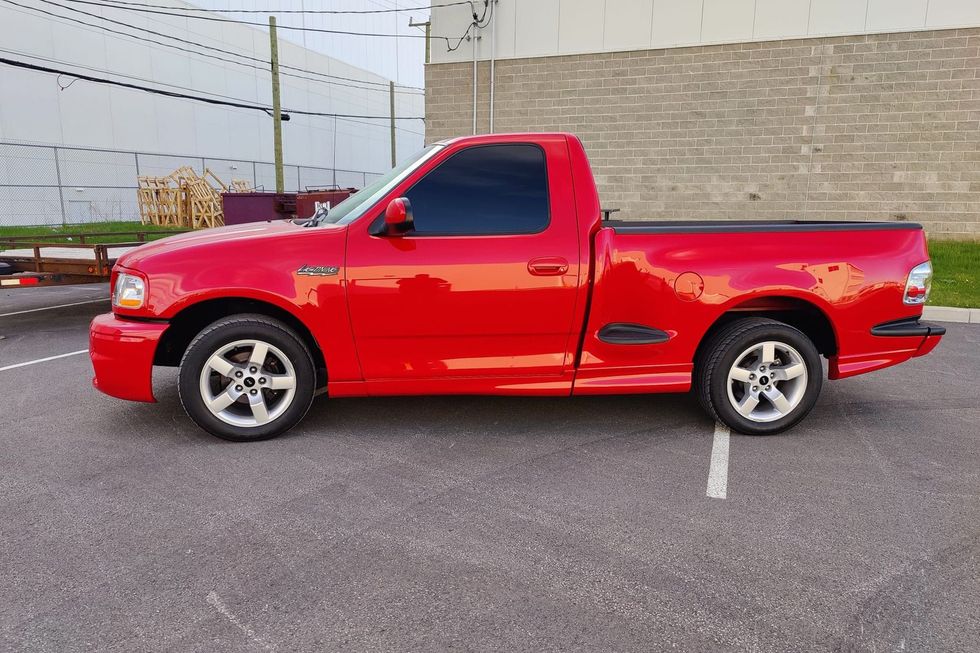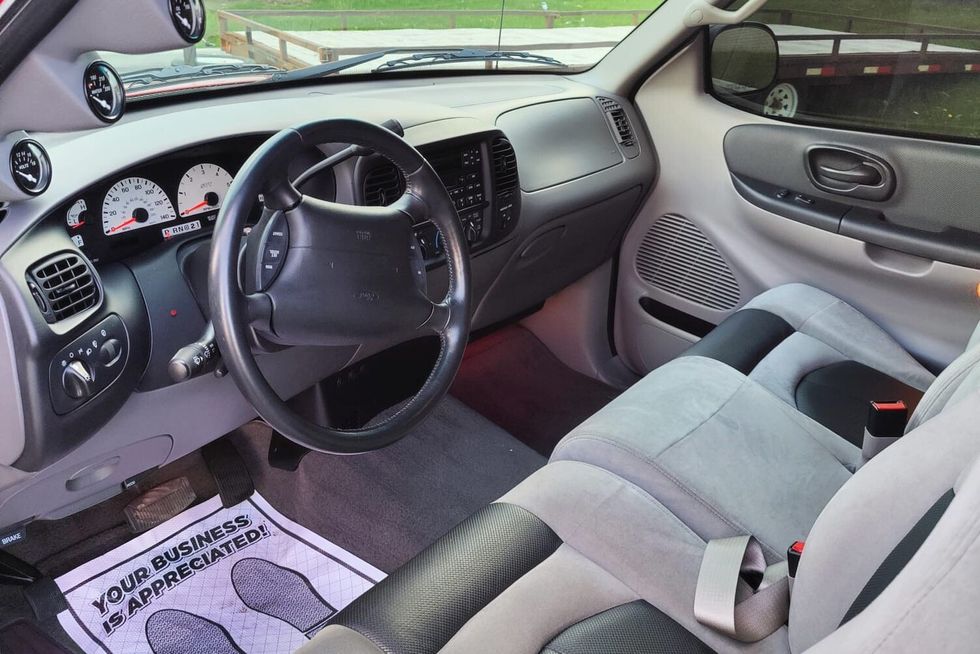Authentically Aztec - 1956 Chevrolet Corvette
Having survived more than five decades, this 1956 Corvette is one of the few remaining solid-axle models that hasn't been restored
09/23/2018


Original Corvettes are the pride of the Bowling Green community. These unrestored treasures are held in such high esteem that they are lovingly worshiped, as if they were mythic Greek gods. To some owners, they are. While there are many fourth-generation Corvettes still parading around in their factory-applied paint, as well as a good supply of late Seventies-era Stingrays, there aren't as many original mid-year model Corvettes remaining--and even fewer solid-axle models. This Aztec Copper beauty is one of the few that has safely escaped the restorer's touch.
This Corvette has spent most of its life in California, where the warm, dry climate prevented any rust from forming on the frame, chrome plating or ancillary metal components. But the heat did dry out the upholstery to the point where it couldn't be saved, so one of the previous owners installed seats made with the pattern that was used for the 1961 model year. Current owner Bob Handschiegel, of Hampshire, Illinois, had the seats reupholstered with a correct 1956-pattern kit from noted Corvette interior specialist Al Knoch. That's been the only change: The remaining upholstered interior parts, such as the door and kick panels, dashboard and carpeting, are all original to the car.
For the 1956 model year, Chevrolet built 3,467 Corvettes, which was a huge increase from the year before, when only 700 were made. A limited palette of six colors was offered this year; only 402 Corvettes were finished in the striking shade of Aztec Copper that adorns our feature car. Of those, 166 were treated to the two-tone option that finished the side coves in contrasting beige--but as you can see, this car was not one of those. Nonetheless, the old lacquer that this car was sprayed with at the factory in St. Louis, some 54 years ago, is original to the car. Apart from a few scratches, chips and the familiar star cracks that are common to old fiberglass bodies as they age with their factory-applied finishes intact, the paint is in phenomenal condition.
Back in the mid-Fifties, the performance market was still in its infancy. But thanks to the fire that Oldsmobile fueled with its Rocket V-8 seven years before, an increasing number of car buyers wanted a taste of that performance--especially Corvette buyers, who always wanted as much power as possible. That is why, when purchasing one of those 3,467 Corvettes built for 1956 (all of which had the 265-cu.in. V-8), a staggering 88.9 percent of buyers checked off RPO-469 on the order form. This popular engine option got them a pair of four-barrel carburetors sitting atop a special aluminum intake manifold; this dual-quad setup increased the power output from the standard 210hp to 225hp. The four-barrel Carter carbs you see here are the original carburetors fitted to this car when it rolled along the assembly line, and they still retain all of their original components, springs and linkage. And the engine still pulls strong--helped, no doubt by Bob's use of 100-octane Av Gas, and Formula Shell straight 30W oil.
It wasn't until the 1957 models that Chevrolet offered a four-speed manual gearbox on Corvettes. For 1956, the two-speed Powerglide automatic transmission was fitted to 1,570 cars, with the remaining 1,510 Corvettes equipped with the three-speed manual. But at some point, this car's second owner, from whom Bob bought it, had the old Powerglide replaced with a period-correct Borg-Warner T-10 four-speed. Bob told us, "The four-speed was installed many, many years ago at Harry Mann Chevrolet in Los Angeles; I have all the receipts for the work that was done. I have a friend who has a year-correct Powerglide transmission for it, but at this point in time, I do not want to change it."
At the time of our photo shoot, which took place on the day of the 2010 Bloomington Gold Corvette meet, the odometer had registered just 58,848 miles. That means that this car has only averaged 1,110 miles per year since it was first built. According to Bob, "This Corvette was originally bought by Bob Watson in 1956, who sold it to his sister and brother-in-law, Jack, in 1958; I have the loan papers from that sale. Jack and his wife drove this Corvette until 1970, when it was parked in his mother's garage."
"This is one of the better examples that I found of this design that I had come across," Bob said. "I bought it in May 2006, and brought it home to Illinois in our trailer. While the paint has some checking, the car has not been modified or abused, apart from a few minor items that had been chromed, so it seemed like the best car to restore at the time of purchase. Still, it took almost a month to get it driveable. We power-washed the undercarriage and rebuilt the brake system as the brake fluid dried up. The differential is still painted the original red oxide; we cleaned the undercoating off the rear axle and all the original yellow factory markings appeared. The stencil numbers on the left side of the frame are faintly visible."
He continued: "The steering is still tight for its age, which makes this Corvette a real pleasure to drive--it's like turning the clock back. I would like to really wring it out, but one has to remember that there's only a 265-cu.in. small-block under the hood, so the rewards are not worth breaking it. For what it is, it is fun to drive. However, you have to remember what you are driving, because although the brakes stop the car, they are far short of the brakes we are used to today."
From a purely aesthetic point of view, what Bob likes most of this particular model Corvette is its simple styling. He told us, "I like the design, especially the front end. I never had a specific reason for that until Hemmings told me why. The December 2008 issue of Hemmings Motor News had an article on the 1956-'57 Corvette; in part, it stated 'GM designers shot for the moon when they emulated the Mercedes 300 SL.' It's true; I always liked the look of the Mercedes, but never put the two together."
Although he's been tempted to make his Corvette perfect once more, Bob's been persuaded by many to keep it as is, and to refrain from eradicating the car's past with a new coat of paint. "My original intent was to restore the car, but many Corvette enthusiasts have discouraged me from doing so," Bob said. "One day, I intend to rebuild the engine so it will be dependable, although I will not repaint the engine or any of its ancillary components, so it will remain, at least from the exterior, as original-looking as possible. I also plan to rebuild the power top mechanism, but that's about it for now. And although the exterior paint has a lot of cracks in it, it really doesn't look too bad from 50 feet away. I use IBIZ wax to protect the original paint, followed by an application of DuPont Finesse to buff it out. But for the time being, I'm just going to straighten the cove moldings, continue to clean things and keep it running good.
"Keep in mind that Duntov did a flying mile in a 1956 Corvette at 150 MPH, thus saving the Corvette. Its future was doubtful prior to that run, but this test became a great selling point. It's because of that history that I bought a 1956 Corvette rather than a 1957 Corvette."
And it's for that history that Bob plans to keep his Corvette as original as possible, a figure worthy of being kept on a pedestal and admired.
Forget Ford’s groundbreaking electric truck for a moment to consider this 2001 Ford SVT F-150 Lightning now offered on Hemmings Auctions. Instead of the dual permanent-magnet motors found in the current electric Lightning, the 1999-2004 SVT Lightning featured a supercharged version of Ford’s 5.4-liter “modular” OHC V8. Rated at 380 horsepower in the 2001-’04 models, it was good enough to make a stock lightning a formidable opponent on the street as well as at the strip.
A follow-up to the original 1993-’95 F-150 Lightning, which was a high-performance version of a standard F-150, the second-generation SVT super truck presented as a more thoroughly developed model with a lot more exclusive components that further differentiated it from the rest of the F-Series lineup. Beyond the engine, the entire suspension and braking system, not to mention aerodynamic body add-ons, were part of the Lightning package from 1999 through 2004. Exclusive interior components were also part of the package.
At the heart of this SVT Lightning is its iron-block 5.4-liter SOHC, 16-valve V8 with a supercharger and an intercooler. The blower helped it deliver 380 horsepower and 450 lb-ft of torque in 2001, up some 20 horsepower and 10 lb-ft from the ’99 and 2000 models. The Eaton supercharged engine delivered peak boost of 8.0 psi and the engine featured an 8.4:1 static compression ratio, down from the standard 5.4 V8’s 9.0:1, which was rated at 260 horsepower and 350 lb-ft.
Power reached the rear 18-inch cast aluminum-alloy wheels via a four-speed automatic, an aluminum driveshaft and a beefy 9.75-inch, limited-slip rear axle with an acceleration-friendly 3.73:1 final-drive ratio, another upgrade for 2001. Car and Driver magazine reported a 0-60 mph time of 5.2 seconds and a quarter-mile in an E.T. of 13.8 seconds at 104 mph—impressive numbers for a 4,600-pound truck. Top speed was a drag-limited 142 mph.

Trucks generally require a suspension that can handle a full load in its bed while also providing competent driving while empty. But if you fancy one designed to a sports-car standard, then something has to give. In the case of the second-gen Lightning, Ford dropped its payload capacity to a mere 800 pounds. A standard 2001 F-150 Styleside carried a 3,180-pound payload rating, while an F-150 Flareside was rated at 2,005 pounds, some two-and-a-half times the Lightning, which featured the short-bed Flareside body. Towing capacity, likewise, was reduced from 8,800 pounds to 5,000 in the Lightning. But the Lightning’s strengths were never its payload or towing capacities, but it’s ability to perform like a sports car.
As a 21st century performance vehicle, however, the second-gen Lightning was also equipped to handle. A half-inch drop at the front was accompanied by SVT-specific coil springs and Bilstein shocks along with an exclusive 31-mm solid anti-roll bar. SVT’s influence continued at the rear with Lightning-specific five-leaf springs and a 23-mm solid anti-roll bar. The Bilstein setup at the rear included the right-rear shock staggered toward the front of the truck to reduce axle hop under heavy acceleration. The four-wheel antilock disc brakes were cribbed from the three-quarter-ton F-250, with 12.1-inch front rotors at the front and 13.1-inch discs at the rear.

As the years go on, fewer and fewer clean, unmolested low-mileage examples are out there, which is why this 2001 Ford SVT F150 Lightning now on Hemmings Auctions caught our attention. Showing just 5,525.5 miles on its odometer at the time of submission, it is said to be in “mint” condition and have an “immaculate” finish in the seller’s words. No modifications are noted to any part of the vehicle. The 18-inch factory alloys don’t appear to have any curb rash, though the Goodyear performance tires may be original. About the only deviations from stock are the tinted windows.
The latest electric-only F-150 Lightning is certainly a quick vehicle in its own right, but this 2001 edition from the engineers at SVT was built for excitement, not range. It was made with an old-school muscle-car vibe along with modern handling and braking. Which Lightning would you look good behind the wheel of?
Take a look at this second-gen Lightning on Hemmings Auctions before the bidding ends.

Spring is here. As the snow melts and the daffodils bloom, it’s time for many vintage cars to emerge from winter hibernation and get back on the road. Thinking of adding to the collection? We have 10 vehicles in spring-like shades of yellow – including cars and trucks, U.S. and European – to catch your eye.

















































